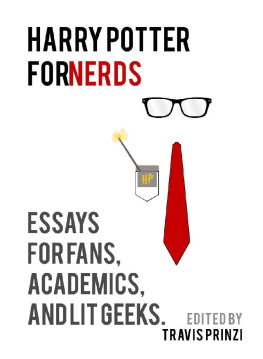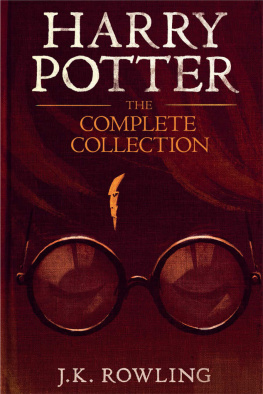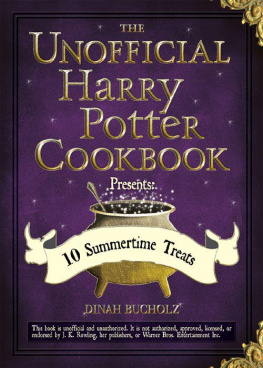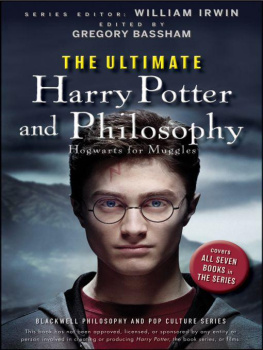
The Harry Potter Generation
Essays on Growing Up with the Series
Edited by EMILY LAUER and BALAKA BASU

McFarland & Company, Inc., Publishers
Jefferson, North Carolina
LIBRARY OF CONGRESS CATALOGUING DATA ARE AVAILABLE
BRITISH LIBRARY CATALOGUING DATA ARE AVAILABLE
e-ISBN: 978-1-4766-3552-1
2019 Emily Lauer and Balaka Basu. All rights reserved
No part of this book may be reproduced or transmitted in any form or by any means, electronic or mechanical, including photocopying or recording, or by any information storage and retrieval system, without permission in writing from the publisher.
Front cover image 2019 Shutterstock
McFarland & Company, Inc., Publishers
Box 611, Jefferson, North Carolina 28640
www.mcfarlandpub.com
For Chris and Daniel and
most of all for Mary Cotter: may you grow up
to have the heart of a Hufflepuff,
the courage of a Gryffindor, the wit of a Ravenclaw,
and the fashion-sense of a Slytherin
Acknowledgments
Our work would not have been possible without the help of our families, friends, students, colleagues, contributors, and fellow Harry Potter fans. We are indebted to Gary Mitchem at McFarland for his ongoing support of this project, to our peer reviewers for their thoughtful and perceptive comments, and to our wonderful contributing authors for their provocative and insightful essays and their patience as we steered this collection towards completion.
We are immensely grateful to our first readers, Carrie Hintz and Katherine Broad, for their keen eyes and useful advice. Wed like to thank our parents, George and Laurie Lauer and Sumita and Dipak Basu, for their confidence in us not just for this project but also throughout our lives. Our partners, Chris Cotter and Daniel Clark, came happily along for the ride as we lived and breathed Harry Potter for the past several months. We especially thank Daniel for managing our document and for his painstaking work in preparing the manuscript for delivery.
Our colleagues at Suffolk County Community CollegeSUNY and the University of North Carolina at Charlotte have been invaluable sources of support, particularly Audrey Delong, David Clark, Lizzie Harris McCormick, Mark West, and Paula Connolly.
The inception of this book project was a panel at the Northeast Modern Language Association (NeMLA) conference in 2014. We would like to acknowledge this conferences friendly, productive atmosphere, which makes it seem so exciting and achievable to collaborate. Thank you, NeMLA.
Finally, wed like to thank J.K. Rowling for creating the wizarding world and for allowing us and a generation of fans to grow up at Hogwarts with Harry and his friends.
Introduction
Learning from the Harry Potter Generation
EMILY LAUER and BALAKA BASU
When J.K. Rowling introduced the world to Harry Potter in 1997, she gave us not just a character and a novel, but a zeitgeist. For those who love books, that act has become the stuff of legend. In an article for the Wall Street Journal, titled How Harry Saved Reading (Lebrecht 2011), the authorlike many othersgives this ultimate accolade to the series: before Harry, childrens books simply did not sell; in contrast when the fourth novel of the series, Harry Potter and the Goblet of Fire, was published in 2000, midnight release parties sprung up in bookstores all over the nation to give readers access to the new installment as early as legally possible. As Lebrecht points out, suddenly On trains, in airport lounges, in parks and on beaches, everywhere one went, everybody seemed to be reading Harry Potter. It didnt end there; childrens authors who had been publishing for many years previously were suddenly being pushed forward by book-sellers who claimed readers would like them because they loved Harry. The 2001 edition of Diana Wynne Jones 1980s Chrestomanci series, for instance, had a cover blurb which read: Mad about Harry? Try Diana. It was a heady, game-changing time for adults in the publishing industry, but for the generation of children born in the late 1980s and early 1990s, it set the standard by which all other fictions and narratives would be measured.
Those children, now adults, came of age in a world where Pottermania was as defining as Beatlemania had been for their grandparents. Unlike Beatlemania, however, which frequently divided young people from the adults in authority, Pottermania matured with its readers, as the main characters, the readers themselves, and the franchise all grew up together. What does it mean to interact with this generation of readers, students, and authors who came of age alongside Harry? As theyve matured over the last decade, the Harry Potter generation has watched a series of books thoroughly permeate the landscape of popular culture. Due to the intense cultural saturation of these books, movies, imagery and merchandise into almost every aspect of their lives, children of this generation have had their ideas about education, romance, friendship, family, and narrative shaped by the Harry Potter stories.
The effect of the series on this generationand the effect of this generation on the worldis profound. As professors, we can now reflect on the ways we have encountered this generation in college classrooms, and it becomes apparent that their conception of themselves as independent readers begins with Harry Potter. As many of the authors in this volume make clear, because of the series crossover appeal to adults as well as children, it has created a fan space where the boundaries between children and adults are blurred, which has been foundational for the generations conception of adulthood. Rowlings flawed, three-dimensional adult characters who behave in similar ways to her child characters bring together adult and child fans of the series letting them interact with one another at midnight releases of books and movies as well as on the internet in fan communities. In fact, the series has even helped to erase distinctions between child and adult readers, with YA novels now being regularly cross-marketed to both demographics. Further, because of its global media saturation, the Potterverse has helped to give rise to our current culture of participation and fandom, where people of all ages can discuss and disseminate ideas with each other in both authorized and unauthorized fan spaces. Intergenerational appreciation and multimedia participation have shaped the Harry Potter generation who grew up with a cultural phenomenon that had the potential to inflect every aspect of their lives.
As all of this fan activity surrounding the series indicates, Rowlings creation is one that offers a substantial reward for investment. The Potterverse imbues the quotidian experiences of a childs life with magic, as activities such as shopping for school supplies or taking a train ride are shared by the lives of the readers and fantasy characters. This blend of the magical with the mundane also inherently supports the notion that the fictional lives of its characters should be extended beyond the borders of the novel. Naturally the owners of the Potter franchise are attempting to cash in on this phenomenon with the release of the film Fantastic Beasts and Where to Find Them (and its four planned sequels) and with the authorized release of a two-part play that continues Harrys saga: Harry Potter and the Cursed Child
Next page


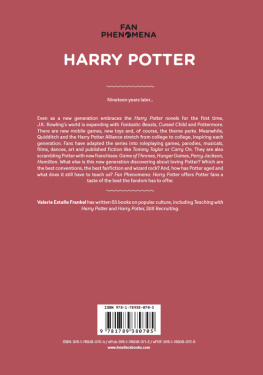
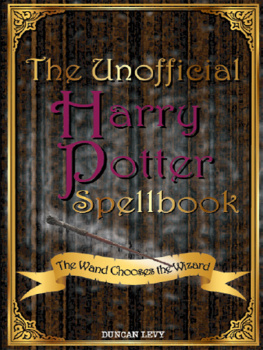
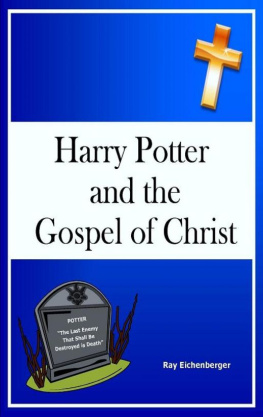
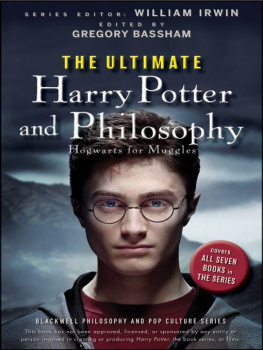
![J K Rowling - Harry Potter [Complete Collection]](/uploads/posts/book/117015/thumbs/j-k-rowling-harry-potter-complete-collection.jpg)
